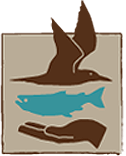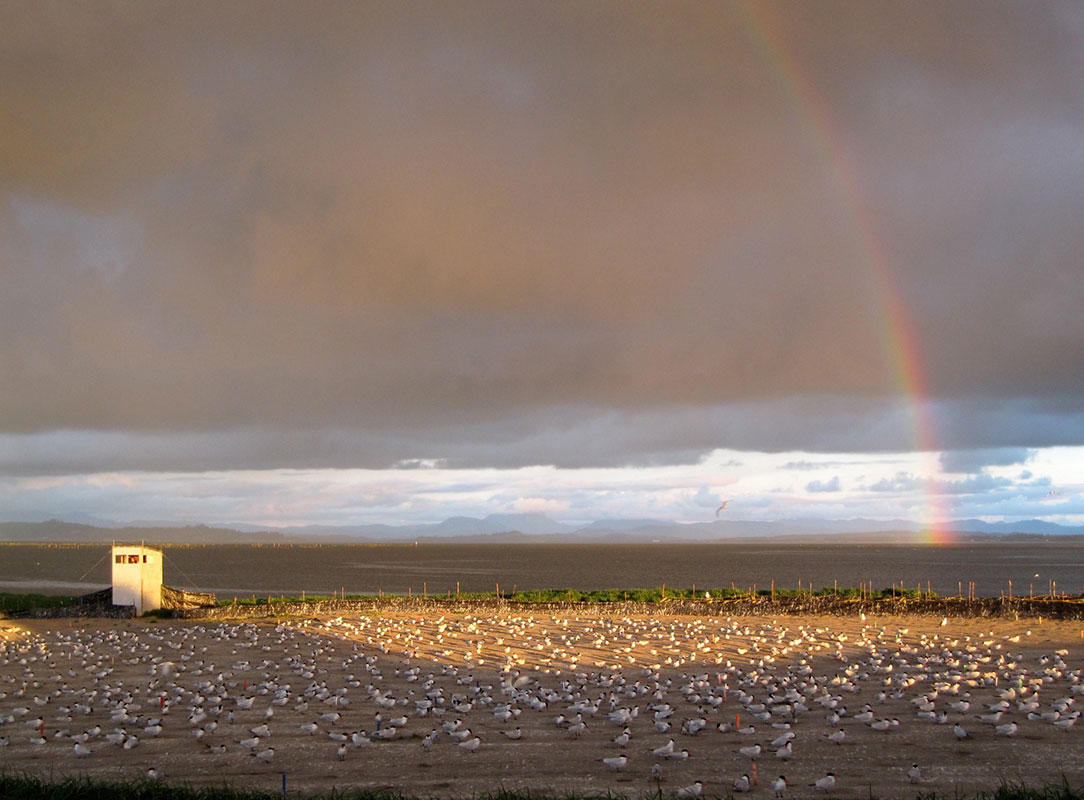 The Summer Lake Wildlife Area is located in south-central Oregon near the Town of Summer Lake (OR) and is owned and managed by the Oregon Department of Fish and Wildlife. The Summer Lake Wildlife Area consists of an extensive area of wetlands, moist soil units, and freshwater impoundments associated with the Ana River, which flows into the north end of Summer Lake. A small breeding colony of Caspian terns (< 50 breeding pairs) formerly nested on a small island in Summer Lake proper in association with a much larger colony of California and ring-billed gulls on at the south end of the Wildlife Area. In 2001 and 2002, this colony failed to produce any young due to declining water levels in Summer Lake, which provided access to the island for mammalian predators (e.g., coyotes, raccoons, skunks). In 2002, Caspian terns attempted to nest on a small push-up island in East Link Impoundment, but this nesting attempt also failed. Prior to the arrival of Caspian terns to the Summer Lake area in spring of 2003, improvements were made to the push-up island in East Link Impoundment; 5 pairs of Caspian terns attempted to nest there in 2003 and produced 2 young. Prior to island construction (see below), nesting attempts by Caspian terns in the Summer Lake area have been recorded in only one year since 2003 (3 breeding pairs in 2005; Marty St. Louis, ODFW, personal communication). Summer Lake Wildlife Area is listed as one of five sites in interior Oregon/N.E. California where resource managers intend to create nesting habitat for Caspian terns in an effort to provide alternative habitat for the large tern colony on East Sand Island in the Columbia River.
The Summer Lake Wildlife Area is located in south-central Oregon near the Town of Summer Lake (OR) and is owned and managed by the Oregon Department of Fish and Wildlife. The Summer Lake Wildlife Area consists of an extensive area of wetlands, moist soil units, and freshwater impoundments associated with the Ana River, which flows into the north end of Summer Lake. A small breeding colony of Caspian terns (< 50 breeding pairs) formerly nested on a small island in Summer Lake proper in association with a much larger colony of California and ring-billed gulls on at the south end of the Wildlife Area. In 2001 and 2002, this colony failed to produce any young due to declining water levels in Summer Lake, which provided access to the island for mammalian predators (e.g., coyotes, raccoons, skunks). In 2002, Caspian terns attempted to nest on a small push-up island in East Link Impoundment, but this nesting attempt also failed. Prior to the arrival of Caspian terns to the Summer Lake area in spring of 2003, improvements were made to the push-up island in East Link Impoundment; 5 pairs of Caspian terns attempted to nest there in 2003 and produced 2 young. Prior to island construction (see below), nesting attempts by Caspian terns in the Summer Lake area have been recorded in only one year since 2003 (3 breeding pairs in 2005; Marty St. Louis, ODFW, personal communication). Summer Lake Wildlife Area is listed as one of five sites in interior Oregon/N.E. California where resource managers intend to create nesting habitat for Caspian terns in an effort to provide alternative habitat for the large tern colony on East Sand Island in the Columbia River.
 The USACE, in partnership with the Oregon Department of Fish and Wildlife, created about 1 acre of nesting habitat for Caspian terns at Summer Lake Wildlife Area prior to the 2009 nesting season. Construction of two 0.5-acre islands at the Summer Lake Wildlife Area was initiated in December 2008 and completed by early March 2009. A half-acre island was constructed in East Link Management Unit, the site of the most recent tern nesting activity at the Summer Lake Wildlife Area. A second half-acre island has been built on Dutchy Lake; this island consists of a floating platform instead of a fill island because Dutchy Lake is a permanent body of water. Prior to the 2010 nesting season, an additional half-acre island was constructed in the Gold Dike Management Unit in Summer Lake Wildlife Area, but because of low water levels this island will not be available for tern nesting in 2010. Caspian tern decoys and audio systems that broadcast Caspian tern calls were installed on the Dutch Lake and East Link tern islands in an effort to attract terns to nest at the sites in 2009-2010. In the first year following island construction at Dutchy Lake and the East Link Management Unit, Caspian terns nested successfully at both sites, where a total of 15 breeding pairs raised 12 young terns to fledging.
The USACE, in partnership with the Oregon Department of Fish and Wildlife, created about 1 acre of nesting habitat for Caspian terns at Summer Lake Wildlife Area prior to the 2009 nesting season. Construction of two 0.5-acre islands at the Summer Lake Wildlife Area was initiated in December 2008 and completed by early March 2009. A half-acre island was constructed in East Link Management Unit, the site of the most recent tern nesting activity at the Summer Lake Wildlife Area. A second half-acre island has been built on Dutchy Lake; this island consists of a floating platform instead of a fill island because Dutchy Lake is a permanent body of water. Prior to the 2010 nesting season, an additional half-acre island was constructed in the Gold Dike Management Unit in Summer Lake Wildlife Area, but because of low water levels this island will not be available for tern nesting in 2010. Caspian tern decoys and audio systems that broadcast Caspian tern calls were installed on the Dutch Lake and East Link tern islands in an effort to attract terns to nest at the sites in 2009-2010. In the first year following island construction at Dutchy Lake and the East Link Management Unit, Caspian terns nested successfully at both sites, where a total of 15 breeding pairs raised 12 young terns to fledging.



